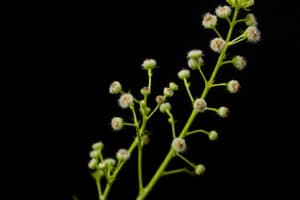Podcast
Questions and Answers
Which characteristic of life refers to the basic structural units that make up organisms?
Which characteristic of life refers to the basic structural units that make up organisms?
- Require Energy
- Respond to the Environment
- Are Composed of Cells (correct)
- Reproduce
What is the primary form of energy that living organisms require to function?
What is the primary form of energy that living organisms require to function?
- ATP (correct)
- Glucose
- Oxygen
- Nutrients
To grow and sustain themselves, what must living organisms do?
To grow and sustain themselves, what must living organisms do?
- Consume external energy
- Reproduce similar organisms (correct)
- Exhibit different levels of organization
- Respond to stimuli
Which characteristic of life refers to the gradual changes in an organism from its initial state to maturity?
Which characteristic of life refers to the gradual changes in an organism from its initial state to maturity?
What does the characteristic of 'different levels of organization' imply?
What does the characteristic of 'different levels of organization' imply?
Which of the following best describes how living organisms respond to their surroundings?
Which of the following best describes how living organisms respond to their surroundings?
What is one benefit of growth and development in living organisms?
What is one benefit of growth and development in living organisms?
Which characteristic is NOT a basic requirement for something to be defined as living?
Which characteristic is NOT a basic requirement for something to be defined as living?
What does the term 'botany' originate from in Ancient Greek?
What does the term 'botany' originate from in Ancient Greek?
Who is recognized as the 'Father of Botany'?
Who is recognized as the 'Father of Botany'?
What significant contribution did Pliny the Elder make to botany?
What significant contribution did Pliny the Elder make to botany?
What classification did Theophrastus use for plants?
What classification did Theophrastus use for plants?
What did Padano's Dioscorides compile in his work 'Materia Medica'?
What did Padano's Dioscorides compile in his work 'Materia Medica'?
During which period was the focus of plant classification noted to be significant?
During which period was the focus of plant classification noted to be significant?
What characteristic distinguishes plants from other organisms?
What characteristic distinguishes plants from other organisms?
What advancement facilitated the discovery of new plant species in the Middle Ages?
What advancement facilitated the discovery of new plant species in the Middle Ages?
What process allows plants to produce their own food?
What process allows plants to produce their own food?
What structure is primarily responsible for differentiating plant cells from fungal cells?
What structure is primarily responsible for differentiating plant cells from fungal cells?
What method did ancient tribes primarily rely on to gain knowledge about plants?
What method did ancient tribes primarily rely on to gain knowledge about plants?
Which renowned figure first used the term 'stamen'?
Which renowned figure first used the term 'stamen'?
What is the term for the life cycle pattern involving two adult forms in plants?
What is the term for the life cycle pattern involving two adult forms in plants?
Which generation in the plant life cycle is responsible for producing spores?
Which generation in the plant life cycle is responsible for producing spores?
What key aspect of botany did ancient tribes particularly focus on learning?
What key aspect of botany did ancient tribes particularly focus on learning?
How do scientists typically investigate cause and effect relationships?
How do scientists typically investigate cause and effect relationships?
What type of organisms are plants classified as based on their cellular structure?
What type of organisms are plants classified as based on their cellular structure?
What is a key feature of the gametophyte generation in plants?
What is a key feature of the gametophyte generation in plants?
What is the first step of the scientific method?
What is the first step of the scientific method?
Why is it important to conduct background research in the scientific method?
Why is it important to conduct background research in the scientific method?
How should a hypothesis be structured?
How should a hypothesis be structured?
What is a critical aspect of conducting an experiment in the scientific method?
What is a critical aspect of conducting an experiment in the scientific method?
What should be done after analyzing data from an experiment?
What should be done after analyzing data from an experiment?
Why is it necessary to repeat experiments in the scientific method?
Why is it necessary to repeat experiments in the scientific method?
Which of the following best describes the final step of the scientific method?
Which of the following best describes the final step of the scientific method?
What type of questions can initiate the scientific method?
What type of questions can initiate the scientific method?
Flashcards are hidden until you start studying
Study Notes
Introduction to Botany
- Botany is the study of plants, including their form, function, parts, classification, and diseases.
- The term "botany" originates from the Ancient Greek word "botanē", meaning "pasture", "grass", or "fodder".
- Botany is also referred to as "Plant biology".
History of Botany
- Ancient tribes possessed vast knowledge of plants, particularly regarding edible and poisonous varieties, medicinal properties, and locations.
- This knowledge was passed down through generations via oral tradition and trial and error.
- Theophrastus (370-285 BC) was considered the "Father of Botany".
- He made crude classifications of plants, categorizing them as either flowering (Phanerogams) or non-flowering (Cryptogams).
- He further classified plants into herbs, subshrubs, shrubs, and trees.
- Gaius Plinius Secundus (23-79 AD), known as "Pliny the Elder", described the biological, medicinal, and agricultural aspects of plants in his 37 volumes of "Natural History".
- He was the first to use the term "stamen".
- Padano's Dioscorides (62-128 AD), a Roman Army physician, compiled the medicinal properties of around 600 plant species in "Materia Medica".
- He introduced the names Aloe, Anemone, Phaseolus, and Arisolochia, which are still used today.
- During the Roman era, medicinal plants held great value.
- From the Middle Ages to the 17th century, plant classification was the primary focus.
- The invention of printing and advancements in navigation led to the discovery of new plant species.
- Herbals (books) and herbalists (authors) documented medicinal plants and their locations.
Characteristics of Life
- Living organisms display seven fundamental characteristics:
- Composed of cells: Cells are the basic units of life, and organisms can be single-celled (like bacteria) or multi-celled (like humans).
- Require energy: Living organisms require energy, usually in the form of ATP, to perform essential functions like metabolism and movement.
- Reproduce: Organisms reproduce to grow, sustain themselves, and create offspring similar to themselves.
- Have different levels of organization: Life exhibits a hierarchy of organization, starting with the cell (the basic unit) and extending to the biosphere, encompassing all living organisms.
- Respond to the environment: All living things react to stimuli in their environment, such as tropisms (plant growth responses).
- Grow and develop: Growth and development enable organisms to replace old and dying cells and perform different functions.
- Adapt to their environment: Adaptability enables certain individuals to thrive better than others in their environment.
Characteristics of Plants
- Plants are distinguished by several key characteristics:
- Multicellular eukaryotes: Plants are multicellular organisms with a complex cellular structure, setting them apart from their evolutionary relatives like algae.
- Photosynthesis: Plants are autotrophs, meaning they produce their own food through photosynthesis, utilizing sunlight to convert carbon dioxide and water into sugars.
- Cell walls have cellulose: Plant cell walls contain cellulose, differentiating them from fungi (like mushrooms) whose cell walls primarily comprise hemicellulose, lignin, chitin, and pectin.
- Alternation of Generations: Plants have two adult forms that alternate in production (alternation of generations).
- Sporophyte generation: Produces spores that do not need to fuse with another to develop into a new plant.
- Gametophyte generation: Produces sperms and eggs.
- Multicellular embryo protected within the female parent: Plant embryos develop and are protected within the female parent.
Scientific Method
- The scientific method is a systematic process used to explore observations and answer questions.
- It is a tool for investigating cause-and-effect relationships in nature.
- This method involves the following steps:
- Ask a question: Start by posing a measurable question about an observation.
- Do background research: Analyze existing research to avoid repeating mistakes and find optimal approaches.
- Construct a hypothesis: Propose an educated guess about how things work, phrased in a measurable way to answer the initial question.
- Test your hypothesis through experimentation: Design a fair and controlled experiment to determine if your hypothesis is true or false.
- Analyze data and draw a conclusion: Examine the results of your experiment to determine if your hypothesis is supported or refuted.
- Communicate your results: Share your findings with others through written reports or presentations.
Studying That Suits You
Use AI to generate personalized quizzes and flashcards to suit your learning preferences.





